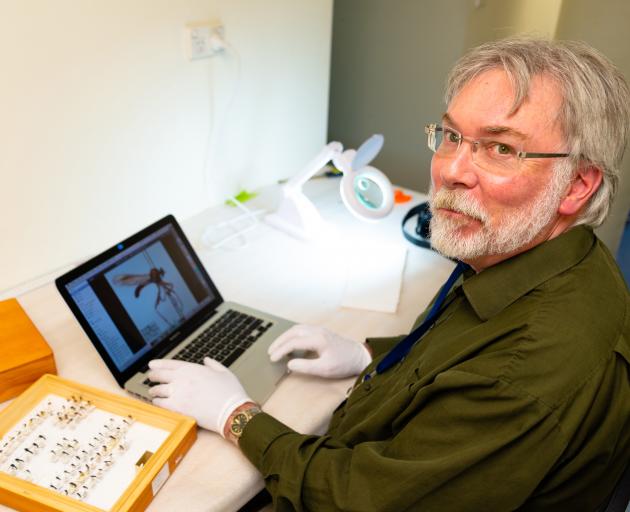
Discovering a new kind of fly is probably not as unusual a thing as people might think, says a Dunedin man who happened upon a previously unknown species at Aramoana last summer.
Associate Professor Steve Kerr, a neurotoxicologist at the University of Otago, found the new species of the long-legged fly, now called Scorpiurus aramoana, while spending time on the mudflats around Aramoana, a small settlement 27km north of Dunedin.
"There are hundreds and hundreds of flies that have been formally described, but I would wager that there are just as many that are yet to be discovered or formally described," Prof Kerr said of his discovery.
"I've seen many other species that I can't find a name for in the literature and when I talk to other experts they say that they're probably undescribed species."
The fly is just the third species of fly to originate from New Zealand. Both previous species are found at the top of the North Island and the top of the South Island, but this is the first to be discovered this far south.
Since Prof Kerr's first sightings in December and January, the fly has also been spotted further south near the Catlins.
The discovery of Scorpiurus aramoana has paved the way for further research into the distribution and ecology of this species, as well as the taxonomy of the genus Scorpiurus.
"The flies from the genus Scorpiurus are endemic to New Zealand, found nowhere else in the world, which makes this species unique, and its discovery even more exciting," Prof Kerr said.
"Given its interesting position in the estuarine ecosystem, it is likely to serve as a good indicator of environmental health.''
Understanding the ecology of flies was crucially important to the enviornment, as they were efficient pollinators and the larva of some flies was an effective cleaner, capable of removing debris from the environment.
Despite most flies being regarded as pests, they were effective control agents that preyed on several pest insects, keeping their population in check.
They also provided an abundant food source for New Zealand's unique birdlife.
The species holotype - the single specimen that acts as the identifier for the entire species - is now held in the Otago Museum collection.
- By Eddy Bramley












